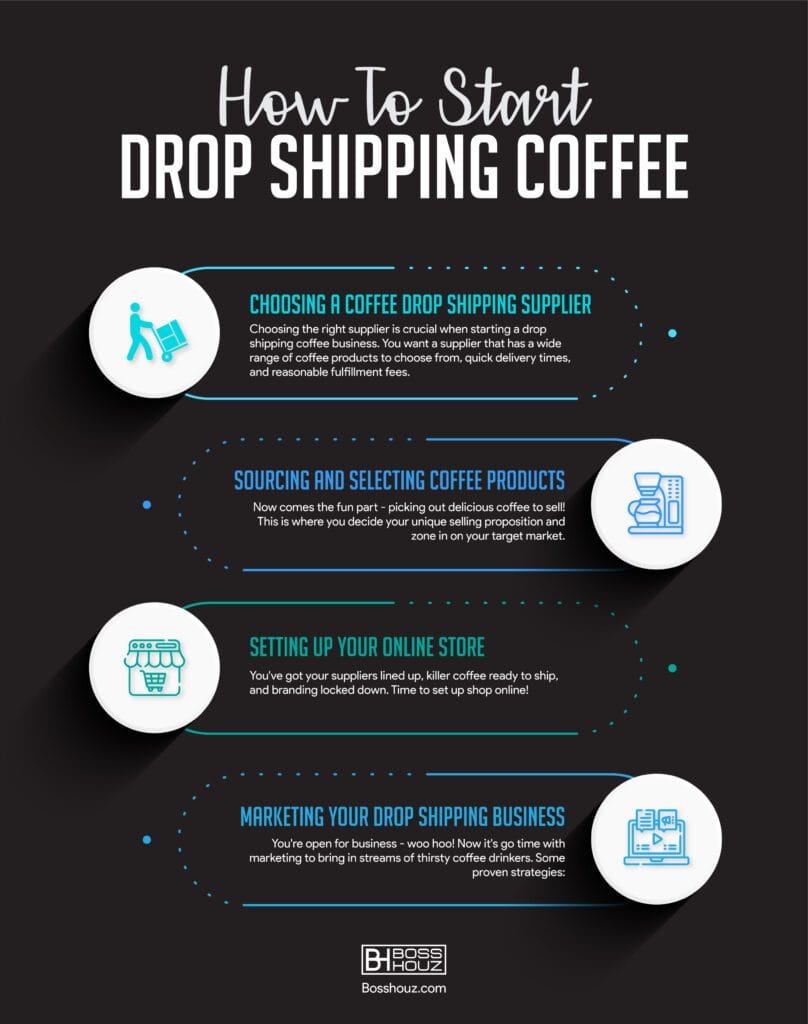Coffee. For many of us, it’s the beloved beverage that kickstarts our mornings and gets our creative juices flowing. But did you know that coffee can also be the key ingredient to a profitable online business? Dropshipping coffee has become an increasingly popular e-commerce model, allowing budding entrepreneurs to sell gourmet coffee blends without ever handling the physical product.
In this comprehensive guide, we’ll explore everything you need to know about starting a dropshipping coffee business, from choosing the right coffee dropshipping suppliers to marketing your boutique coffee brand. You’ll learn insider tips on customizing enticing blends, streamlining operations, and providing exemplary customer service.
Drop shipping is hands-down the easiest, most affordable way to live your dream of selling incredible coffee without all the overhead.
So grab a fresh cup o’ joe, put on your business hat, and let’s dive into the inner workings of this aromatic industry!
Table of Contents
Why Dropshipping Coffee? Understanding This Gourmet Business

Before we begin roasting (metaphorically, of course!), let’s take a moment to understand what exactly dropshipping entails and why specialty coffee lends itself so well to this e-commerce model.
What is Drop Shipping Coffee?
Dropshipping is a retail fulfillment method that allows online entrepreneurs to sell products without keeping any inventory. When a customer places an order, the store owner purchases the item from a third-party supplier who then ships it directly to the customer.
This cuts inventory costs and mitigates risks for online sellers while allowing them to offer a wide variety of products.
The Growing Popularity of Coffee Dropshipping
Coffee is big business–we’re talking over $200 billion per year and growing. Combine this with the ease and flexibility of dropshipping, and you have a recipe for serious profits.
Here’s why dropshipping gourmet coffee ticks all the boxes for an online business:
- Increasing demand: The coffee industry is slated to grow steadily at a CAGR of 4.28% through 2025. Coffee culture and consumption continue rising across the globe.
- Value-added products: Premium and specialty coffees allow for attractive margins. Private labeling and custom blends also let you stand out.
- High repeat sales: Coffee drinkers keep coming back for more! Allowing you to upsell customers over time.
- Gift potential: Coffee makes for a popular and personalized gift, creating seasonal sales spikes.
- Lower risks: The dropshipping model means less upfront costs, inventory, and operational headaches.
Clearly, quality coffee and convenient e-commerce are a match made in business heaven!
Types of Coffee Dropshipping
When diving into coffee dropshipping, it’s important to understand the different models available:
- White Label: The supplier handles production while you brand and market the blends as your own.
- Private Label: You work directly with a roaster to create unique or customized blends to sell under your brand.
- Retail Arbitrage: You sell branded products from another retailer without any customization.
White label and private label dropshipping allow the most control and personalization for your coffee brand. As such, we recommend these routes for most entrepreneurs.
Now that we’ve covered the basics, let’s move on to the fun part–starting your very own gourmet dropshipping coffee business.
How to Start Drop Shipping Coffee

Launching a profitable and sustainable coffee dropshipping store entails some key steps. From securing a stellar supplier to marketing your boutique brand, we’ll cover all bases so you can start sipping success.
#1 – Choosing Coffee Dropshipping Suppliers
Here’s the first major decision you’ll make – selecting suppliers to partner with. This determines everything from product quality to order fulfillment, so vet them thoroughly.
Where to Find Suppliers
Search Google, Bing, industry directories, Shopify’s directory, and consider recommendations from fellow merchants. Attending trade shows can also connect you with wholesalers and roasters.
What to Look For
| Criteria | What it Means |
|---|---|
| Quality | Consistent roasts and grind sizes. Positive independent reviews. |
| Reliability | Proven order fulfillment track record. Good communication practices. |
| Customization | Openness to private labeling, branding, custom roasts/blends. |
| Pricing | Wholesale rates that support good profit margins. |
| Professionalism | Established business with commercial-grade practices. |
Once you’ve narrowed down suppliers based on these factors, request product samples to determine quality firsthand. Formalize agreements with one or more suppliers only once completely satisfied.
Building Your Coffee Brand
Now for the fun part – conceptualizing your coffee brand! With the right branding, marketing, and packaging, you can craft a memorable identity that sets you apart.
Craft Your Brand Story
Consumers today want authentic connection and brands that align with their values. Share your genesis story, passion for quality coffee, and any social causes or sustainable practices you support.
Design Striking Packaging
Distinct, attractive labels and bags create shelf appeal and reinforce your branding. Consider foil lining bags to maximize freshness.
Name Your Blends
Blend names that evoke imagery, tell a story, or highlight flavor notes are marketing magic! Get creative with names like Sunrise Serenade, Espresso Excellence, or Jittery Jolt.
With captivating branding and labeling, your packaged coffee creates intrigue and an unboxing experience customers love.
Private Labeling and Customization
One of the major advantages of coffee dropshipping is the ability to not just resell blends, but create your own personalized offerings.
Develop Private Label Blends
Collaborate with your chosen supplier to design signature roasts and flavor profiles under your private label. This allows complete creative control in line with your brand image.
Offer Customized Options Coffee lovers want to get even more tailored with grinds, roasts, and additional flavors. Offer services like:
- Custom grind sizes
- Single-origin beans
- Decaf/half-caf choices
- Flavored syrups
- Monthly subscription boxes
Limited Batches
Small-batch runs of unique seasonal blends, holiday flavors, or region-specific beans keeps customers engaged, excited for your latest creation!
By tapping into coffee connoisseurs’ desire for new experiences through custom blends and personalization, you can keep sales – and satisfaction – soaring.
# 2 – Setting Up Your Online Coffee Store
Any coffee entrepreneur knows that while rich roasts and smooth brews may be the star attractions, your online store acts as the stage. An intuitive, sleek website makes navigating your wares seamless while conveying quality.
Choosing an Ecommerce Platform
Your virtual storefront impacts everything from site design to payment processing. So what ecommerce platform ticks all the boxes for a dropshipping coffee business?
Shopify
The leading platform for running a dropshipping store, Shopify makes setting up seamless while packing a powerful punch to scale.
WooCommerce
This WordPress plugin transforms sites into full-fledged stores. The open-source platform offers abundant customization.
BigCommerce
Favored by established brands, BigCommerce provides robust analytics and multi-channel selling solutions.
| Platform | Key Pros | Potential Cons |
|---|---|---|
| Shopify | Intuitive interface, abundant support | Transaction fees |
| WooCommerce | Customization, flexibility | Steeper learning curve |
| BigCommerce | Scalability, built-in marketing | Higher costs for top-tier plans |
Ultimately, test out demos and free trials to determine the best fit. Many entrepreneurs choose Shopify for turnkey convenience or graduate to BigCommerce upon scaling up.
Designing a Captivating Online Store
Ensure Site Speed
While functionality forms the foundation, visual design and engaging content stirs the emotional connection that drives sales.
By optimizing images and pages for performance, you provide a smooth, frustration-free experience even on mobile devices with spotty connections.
Spotlight High-Quality Product Photography
Tempting product shots inspire impulse purchases! Zoom in on glossy java swirling steamy from a French press, lingering over morning pastries.
Share Origin Stories and Specifics
Help customers vicariously experience the terroir of volcanic Indonesian soil through flavor profiles and growing conditions for single-origin offerings.
Design for Simplicity
A clean, minimalist site with intuitive navigation places the beans center stage. Visitors should be able to easily view varieties, details, and reviews.
Ensuring your online store provides a streamlined, evocative experience drives more sales than a generic site ever could!
#3- Marketing Your Online Coffee Business

You’ve set up a professional-grade site and forged partnerships with top-notch suppliers. Now it’s time to spread the word so coffee connoisseurs everywhere can fall in love with your artisan offerings.
SEO and Content Marketing For Coffee
As with any ecommerce venture, a sizeable chunk of site traffic – and sales – stems from search engine visibility. By crafting relevant, engaging content optimized for site architecture and keywords, you’ll sip organic traffic in no time.
Target Keywords:
- Informational: specialty coffee, single origin coffee, coffee bean varieties
- Geographical: New York coffee roasters, Canada coffee suppliers
- Product-specific: Ethiopian Yirgacheffe green coffee beans, cold brew coffee maker
Create Optimized Content:
- FAQs
- Educational articles
- How-to guides
- Top 10 lists
- Coffee origin/variety deep dives
- Video roasting tutorials
Format Content for SEO:
- Descriptive title tags
- Optimize page speed
- Meta descriptions
- Image ALT tags
- Schema markup for rich snippets
- Interlinking internal content
This treasure trove of optimized content will help your boutique coffee shop attract visitors searching far and wide for their new favorite artisanal bean supplier.

Social Media and Email Marketing
While SEO builds long-term organic growth, social media and email marketing generate more immediate sales. Plus you can engage directly with coffee fans worldwide.
Choose Platforms:
- Instagram: Stylized coffee pics and short video how-tos
- Pinterest: Pin tempting recipes involving coffee
- Facebook: Share stories, news, and sale announcements
- Email: Send coupon codes and new product launches
Create Captivating Content:
- Photos spotlighting new products
- Polls involving coffee preferences
- Behind-the-scenes supplier videos
- Coffee memes and quotes
- New blend launches and sales
- Customer reviews and testimonials
- “Meet our roaster” interviews
- Coffee coupon codes
Leveraging multiple platforms crafts an omnichannel experience that builds rapport and reaches customers however they prefer to engage.
#4- Streamlining Operations and Fulfillment
Running a smooth-brewing backend operation ensures your coffee reaches customers piping hot every time. Let’s explore logistical factors that determine success.
Order Fulfillment Process
The actual order fulfillment process depends on your agreement with suppliers, but generally follows this workflow:
- Receive online order
- Process payment
- Submit purchase order to supplier with customer shipping details
- Supplier fulfills order by roasting, packaging, and shipping coffee directly to customer
- Send tracking information from supplier to customer
Key Fulfillment Partners:
- Packaging: Eco-friendly bags, customizable labels
- Roast-to-order suppliers
- Local roasters: For rush shipping needs
- Shipping carrier accounts: USPS, UPS, FedEx
By streamlining supply chain contacts, you minimize shipping times for that coveted morning cup.
Inventory and Restocking
While you don’t physically house beans, staying on top of projected demand and restocking ensures no depleted inventories.
- Track bestselling varieties
- Anticipate holiday/seasonal spikes
- Get shipping estimates from suppliers
- Alert suppliers to restock popular products
With real-time inventory monitoring and forecasting sales surges, you prevent hated out-of-stock mishaps.
#5 – Providing Five-Star Customer Service
For the coffee connoisseurs frequenting your online shop, quality customer service tops their list of non-negotiables. We’ll explore ways small shops can still provide a five-star experience.
Respond ASAP
Set up monitoring and alerts to receive customer inquiries instantly and provide prompt replies.
Empower Service Reps
Ensure reps have access to past order details, the authority to issue refunds/credits, and are coffee-knowledge pros.
Reward Loyalty
Offer free shipping, member discounts, loyalty perks, and early access to limited-release small batches.
Upsell Strategically
Suggest complementary products like milk frothers, eco-friendly straws, or the perfect brewing gear to enhance their purchase.
Surprise and Delight
Follow up on inquiries with handwritten notes or thoughtful freebies to show customers you care.
By providing exemplary service and building personal rapport, you spark meaningful connections that keep customers coming back.
Keys to Coffee Drop Shipping Success Recap
Alright, we’ve covered the nuts and bolts of starting a drop shipping coffee business. Now let’s chat about how to actually thrive and succeed long-term in this buzzing industry.
Here are my top tips for brewing up drop shipping coffee glory:
Choose the Right Niche & Target Market
With so many roasts and origins out there, it’s tempting to try selling every type of coffee under the sun. Resist the urge! Focus your niche to better attract your ideal customer.
Some ideas:
- Single origin coffees from a specific country like Ethiopia or Brazil
- Dark roasts for the bitter brew loyalists
- Eco-friendly organic fair trade beans
- Specialty blends like espresso and cold brew
Zero in on a niche that speaks to your passion as a coffee purveyor. You’ll come across as more authentic to potential customers.
Build Strong Supplier Relationships
Your suppliers are your lifeline, so nurture those relationships! Communicate often, provide feedback, and work collaboratively. Negotiate better rates as you grow.
Ask if they have any partnership or affiliate programs you can join to increase incentives. The better your supplier relationships, the smoother your operations.
Keep Tabs on Inventory Turnover
Carefully track how quickly your coffee products are selling using inventory turnover rate. If turnover is low, you may need to tweak your pricing, marketing or product selection to drive up sales.
High turnover means you’re adeptly matching supply to demand – the hallmark of a thriving drop shipping mogul!
Create Killer Marketing Campaigns
Devise targeted marketing plans to get the word out and drive sales. Experiment with:
- SEO to rank high in organic search results
- Email sequences that convert subscribers to customers
- Social media ads tailored to your niche
- Content marketing like coffee brewing tips
- Partnerships with complementary brands
Provide Awesome Customer Service
Don’t underestimate the value of top-notch customer service. Offer quick responses, honest feedback and a stellar returns process.
Go above and beyond to show customers you care. This earns loyalty and sets you apart from competing coffee sellers.
Keep Innovating!
Complacency is the enemy of lasting success. Always refine your products, evolve your brand, test new marketing channels, and improve your operations.
Stay nimble and creative, and your drop shipping coffee endeavor will keep growing and thriving.

FAQs About Dropshipping Coffee
Running an ecommerce store involves moving parts galore, so questions inevitably arise. We’ll address some frequently asked questions about managing a dropshipping coffee business to help you prepare.
Finding Suppliers and Products
What are the best coffee dropshipping suppliers?
Some top-rated suppliers include Old Chicago Coffee Co, Aroma Ridge Coffee, Alyssa’s Blend, Aplus Gourmet Coffee, and Exporters Brazil Coffee. Compare factors like reliability, costs, and customization options.
Can I sell fair trade or organic coffee via dropshipping?
Yes, many reputable suppliers offer sustainable, ethically-sourced coffee options you can sell while upholding values important to certain customer segments.
How do I ensure consistent quality from suppliers?
Vet suppliers thoroughly, order samples to cup (taste) yourself, start with small test orders, and request coffee quality reports.
Branding and Marketing
How much budget should I allocate to marketing the store?
Expect to invest 10-30% of revenue into marketing efforts like paid ads, influencer partnerships, and content creation. Focus on ROI and track conversion rates.
What’s the best platform for marketing coffee?
It depends on your audience – Instagram and Pinterest tend to perform well for visually oriented coffee content. Use platforms your audience actively engages on.
Operations and Customer Service
How do returns and exchanges work for dropshipped items?
Accept returns/exchanges just as you normally would. In case of return, ask the customer to ship items back to your warehouse rather than supplier.
Who handles customer inquiries and complaints?
You’re responsible for managing all customer communications. Set up monitoring to respond promptly to queries before they escalate to complaints.
Business Management
What are the main risks involved?
Inventory mismanagement, unreliable suppliers, shipping mishaps, poor branding, declining consumer spending, and stiff market competition. Mitigate through supplier vetting, marketing, and trend analysis.
How much can I expect to earn from a dropshipping coffee store?
Potential earnings vary widely based on business model, marketing effort, and offerings. But an average net profit margin falls around 30%. Top sellers clear over 6 figures!
Final Takeaways: Brewing Success One Cup at a Time
And there you have it – everything you need to know to get your own dropshipping coffee empire percolating!
By finding reputable suppliers, crafting craveworthy blends, optimizing online storefronts, and implementing scalable fulfillment processes, you have all the ingredients needed to succeed. Once your packaging conveys quality, social media tempts tastebuds, and SEO serves enticing content, you’ll earn customer loyalty – and revenue – by the cupful.
As third wave coffee culture continues gaining ground globally, the market potential remains vast. Whether launching a podcast spotlighting Nicaraguan bean terroir or hosting public cuppings of your newest limited-edition Ugandan release, opportunities abound to creatively promote your passion.
So pull up an armchair, grab your favorite hand-thrown mug, and start brewing your next ecommerce success story armed with the blueprint we’ve laid out. Just take the first step and soon you’ll be living – and selling – your very own coffee dream.
Here at Boss Houz, we live and breathe entrepreneurship. Our free ebook provides even more tips on launching your successful online business. We can’t wait to see the coffee creations you’ll whip up!
Now get out there, forge connections worldwide one cup at a time, and go share the brewtiful thing that is quality coffee!








